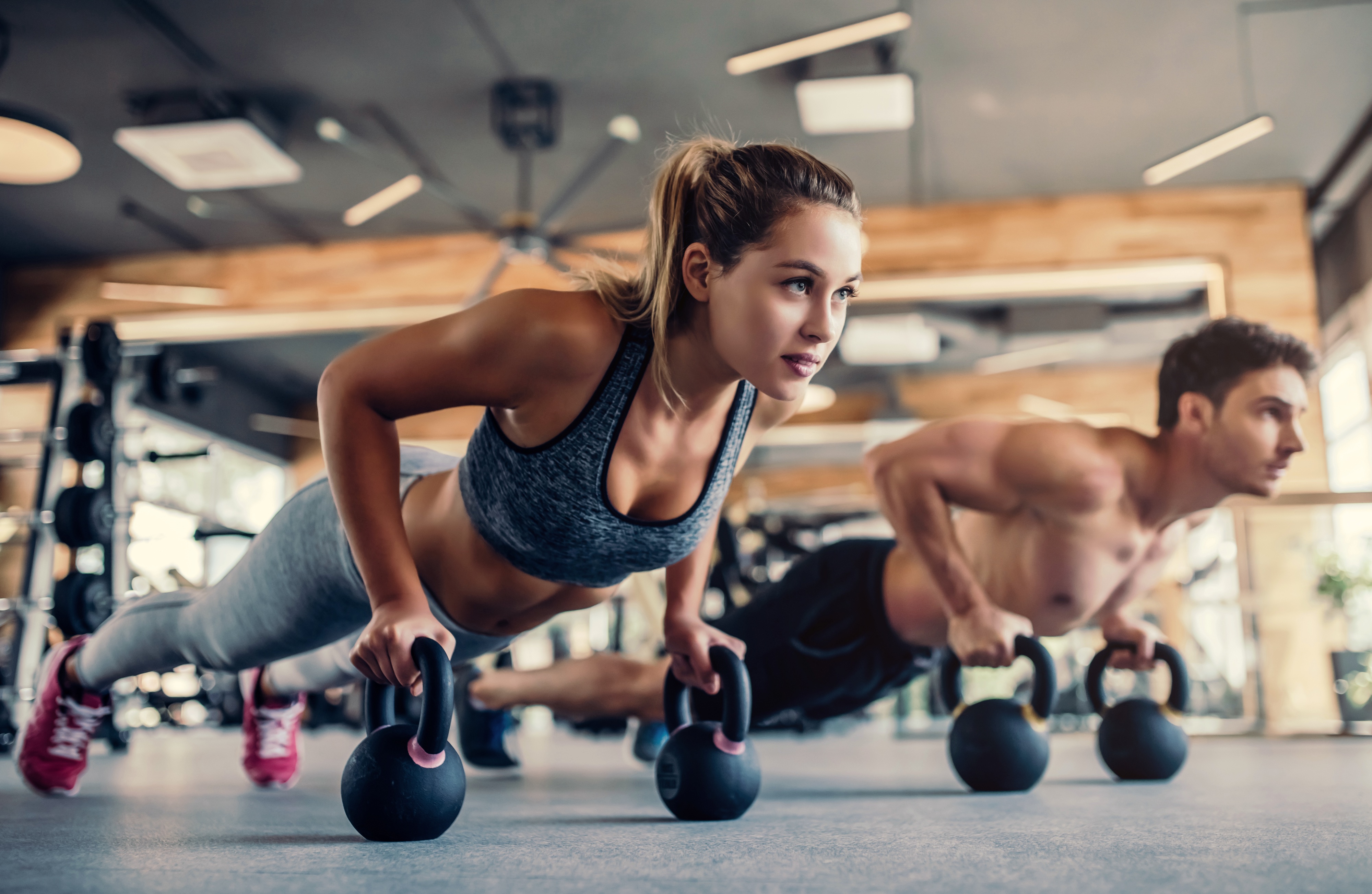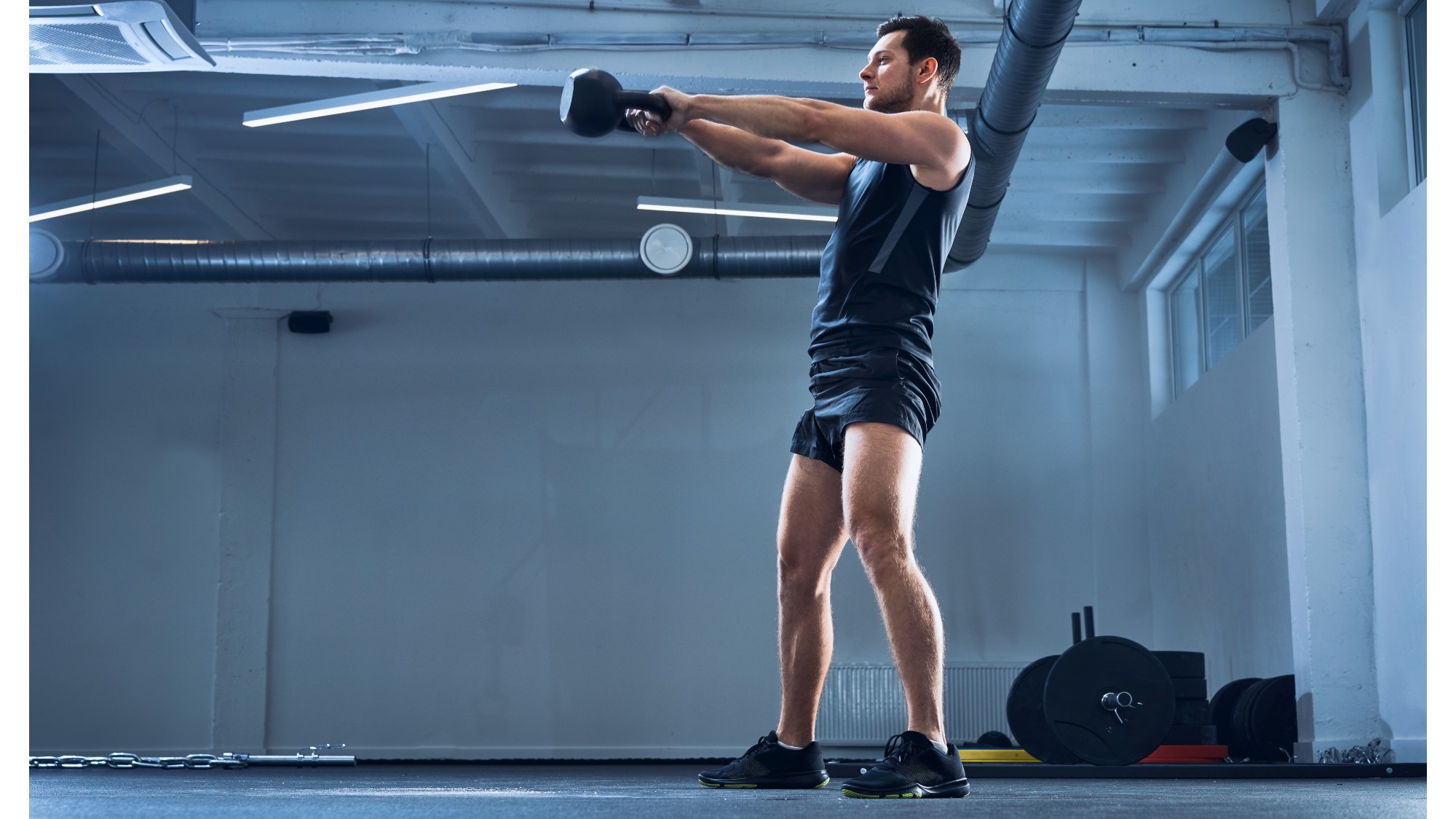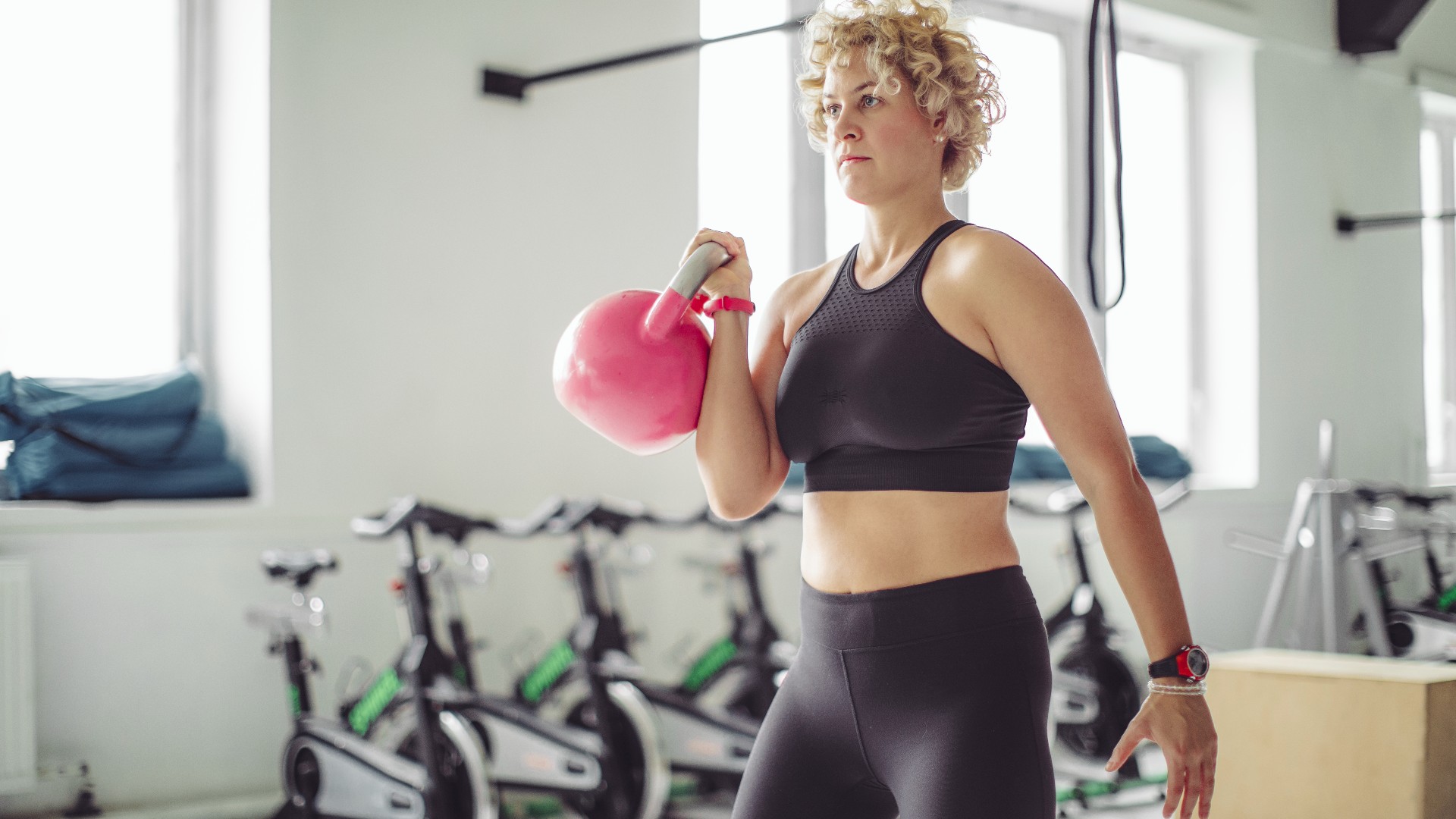
This killer kettlebell workout is ideal if you want to sculpt stronger, leaner muscles and burn calories with minimal equipment. It uses just four moves to build tone in 10 minutes. Now that’s an ideal workout length.
Kettlebells are hugely versatile, and some of the best kettlebells can add instant intensity to your functional training without splashing the cash on the best home gym equipment. They can be tacked on to cardio workouts to improve your cardio fitness and endurance or utilized during strength training to build muscle and explosive power.
You don’t need two kettlebells to achieve results, either. According to the Journal of Applied Physiology, unilateral (single-sided) training using one kettlebell can help strengthen underperforming or inactive muscles without your stronger muscles taking over. It can also challenge your core strength and improve your balance.
This workout will challenge your cardio credentials and balance and build functional full-body strength using just four exercises in 10 minutes. If you prefer working with dumbbells, this full-body dumbbell workout builds strength in just 6 exercises, and I also recommend learning how to do a kettlebell swing before wielding one above your head. Read on for the workout.
The killer kettlebell workout
As a trainer, I like to ensure people don’t get bored, so this kettlebell workout is guaranteed to keep you on your toes using some of the best kettlebell exercises. Perform this as a pyramid AMRAP (as many rounds as possible), starting with 2 reps per exercise and building by 2 each round. If you hit 10 reps, descend by 2 reps each round and continue for 10 minutes.
If you’re building up an enviable kettlebell collection, I recommend picking two weights — one medium and one large — to switch between. Are you only using one? A medium weight will work, but ensure it’s challenging enough for your fitness level and ability.
American kettlebell swing

- Muscles worked: shoulders, glutes, hamstrings, erector spinae, quads, forearms, core, and back.
Stand with feet shoulder-width apart (or slightly wider), toes pointed slightly outwards, and hold your kettlebell in both hands. Roll your shoulders back and down and engage your core. Hinge forward at your hips while maintaining a flat back and push your bum back, swinging the kettlebell back between your legs, then explosively drive it forwards, extending your hips. Swing the kettlebell above your head, then control the descent back down.
Get instant access to breaking news, the hottest reviews, great deals and helpful tips.
My top tip: Go heavy and focus on the hip hinge. Avoid squatting or sending the focus to your arms, and squeeze your glutes. You can hold a kettlebell in each hand if you’re very advanced or alternate single-handed. Reduce the swing to shoulder height if needed.
Kettlebell hang clean and press (alternating)

- Muscles worked: Hamstrings, quads, back, shoulders, core.
Stand with your feet shoulder-width apart and place the kettlebell between your feet. Grip the handle overhand, slightly off-center. Keep your back flat and chest forward-facing, then swing the kettlebell back slightly and pull it upwards close to your body. Bring your arm under the kettlebell into a racked position with your elbow close to your ribs. Drive the weight above your head in an overhead press while extending your elbow.
My top tip: Avoid hitting the weight against your wrist and keep the kettlebell close at all times. Your bicep should be close to your ear during the press.
Kettlebell deficit burpee push-up (alternating)

- Muscles worked: Chest, shoulders, triceps, core, glutes, quads (all major muscle groups)
Start in a push-up position (also try these 5 chest day variations), gripping your kettlebell in your left hand — this will place more emphasis on the left side of your body. Engage your core. Perform a push-up (learn how to do a push-up), then jump your feet just behind your hands and stand up holding the kettlebell. Exchange hands while standing, then hinge forward at the hips and perform a Romanian deadlift to place the kettlebell down on your right side. Jump back to a high plank and repeat.
My top tip: Keep a flat back and use your legs and core to stand up to avoid lower back pain. You can use two kettlebells if you have them. Use your knees if you prefer during the push-up.
Kettlebell racked reverse lunge (alternating)

- Muscles worked: glutes, quads, hamstrings, core.
Repeat the kettlebell clean method above and start in the front rack position with the weight on your front shoulder/upper arm. Keep your elbow close to your body and your core engaged. Step your left leg back, keeping toes and knees pointed forwards, then bend into a lunge position without smacking your knee on the floor. Drive through your front foot to stand and step feet hip-width apart. Repeat on your right leg.
My top tip: Learn how to do a lunge properly to avoid knee injury and find out what happened when our editor did 100 lunges a day for a week.
Not sure what to try next? Find out what happened when I trained like one of the UK’s top CrossFit athletes and get bigger shoulders by learning how to do lateral raises.
Next: I just tried this yoga for knee pain workout — here’s what happened. Plus, we asked an expert — sit-ups vs crunches: Which ab exercise is better?

Sam Hopes is a level 3 qualified trainer, a level 2 Reiki practitioner and fitness editor at Tom's Guide. She is also currently undertaking her Yoga For Athletes training course.
Sam has written for various fitness brands and websites over the years and has experience across brands at Future, such as Live Science, Fit&Well, Coach, and T3.
Having coached at fitness studios like F45 and Virgin Active and personal trained, Sam now primarily teaches outdoor bootcamps, bodyweight, calisthenics and kettlebells.
She also coaches mobility and flexibility classes several times a week and believes that true strength comes from a holistic approach to training your body.
Sam has completed two mixed doubles Hyrox competitions in London and the Netherlands and finished her first doubles attempt in 1:11.
